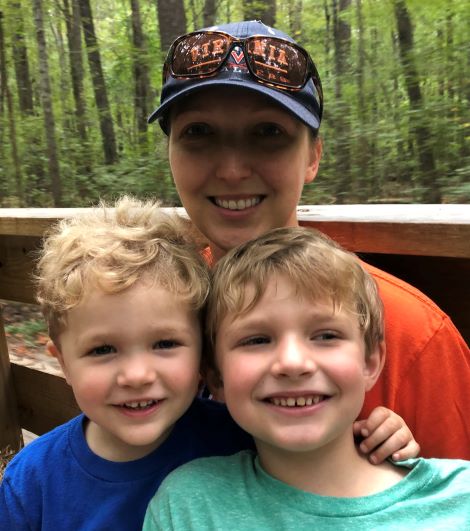
An important and ongoing part of a service coordinator’s job is gathering information from families about their child and how that child fits into the daily routines of their life. This information ebbs and flows, changing as children and parents develop together over time. By gaining insight into these routines service coordinators can facilitate an IFSP rich with meaningful outcomes and goals and can aim to provide services that best meet the needs of the child and family. Come walk a mile with me as we step through a day in the life of a family. Simple though it may seem, let’s start in the very beginning…
It’s time to wake up.
There’s so much information that can be gained by simple, open-ended questions about how a child moves through his/her day. Does a child wake up like a ray of sun or a storm cloud? Does the 7-day forecast call for sunshine or partly cloudy skies? Ask questions about what constitutes a child’s daily routines. Also ask how that child is participating in their day within those routines. If a child starts their day in tears, does it continue to pour or are there rainbows?
Little Sammy wakes up with the sun with tears in his eyes. He calls out “mommy” while sitting in his toddler bed. After a few minutes of snuggles he’s ready to start the day. When his mom asks what he wants to wear today he pulls open the dresser drawer and says “Paw Patrol” while pulling out his shirt. He lays down on the bed in anticipation of having his diaper changed. He grabs it and says “peepee.” As soon as he is dressed and dry he runs out the door calling out for “daddy” and tells him he’s ready for “a snack” (aka breakfast). He pulls over the kitchen stool to the pantry. He gives a “bar” to dad for help opening the package.
This small part of Sammy’s morning routine alone contains a wealth of information. He has a healthy attachment to his parents. He is growing in independence. Sammy recognizes the routines in his day and participates in dressing. He is showing early signs of readiness for toilet training. Sammy calls out to his family by name. He is using words to tell others what he needs and to identify when he needs help. He is using nice problem solving to figure out how to get something himself. What other things can we ascertain about Sammy from the first 15 minutes of his day?
The days are long, but the years are short.
Most of us are probably familiar with this little adage but unless you are still in those days, then it can be all too easy to forget just how long the days can be. As the family talks about the ins and outs of their daily routines, ask follow-up questions about the child’s likes and dislikes, what do they love to play with and how do they play with it, and what happens when it’s time to stop doing that activity. Are there times of the day the family dreads? The family’s answers can provide a valuable insight into what direction to take with the providers as you plan for the assessment and segues smoothly into the conversation about the family’s concerns and priorities. It can also help you identify challenges within the day the family might not recognize as a challenge.
Service Coordinator: Does your son take a nap?
Mom: Yes, after lunch.
Service Coordinator: How long are his naps?
Mom: Usually about an hour and a half.
In this interaction we’ve established that Sammy takes a nap but a few follow-up questions might reveal that Sammy can easily take up to an hour (or more) to fall asleep and will only stay asleep with his mom next to him. It’s a challenge and frustration for his mom because she doesn’t have that time free to get a few things done around the house. Meanwhile, at daycare he’s the only child in the room that doesn’t nap. His teachers have given up rubbing his back and he now spends the 2 hours lying still in his cot not allowed to talk or move. He has come to associate daycare with being forced to lie still for 2 hours and now drop-off has become a challenge, filled with tears and begging not to go. Take a moment to reflect on how you frame questions to families about their child’s routines. Challenge yourself to think more reflectively and capture the quality of the routines.
Pulling it all together.
The benefits of delving more deeply into daily routines and activities during the development of the IFSP are numerous. Those benefits include a broader knowledge of the child’s natural environments and possible locations for services to take place in the future, capturing challenging moments in the day that might not have been reported at the initial referral, and identifying naturally-occurring routines that can be used to develop richer, more meaningful outcomes and goals for the child and family, only to name a few. Empathy and open-mindedness are useful tools that will enable you to meet a family where they are. Using those tools to gather information from families about their child and how their child fits into the daily routines of their life lends itself naturally to capturing a true picture of a child’s development and functioning that enables us to move beyond our assessment tools. Early intervention supports and services are bound to be more successful when they’re meaningful to the family and embedded naturally into the child’s daily activities and routines.
While we walk alongside a family in the direction of their rainbow, what questions can you ask to better understand how to walk a mile in their shoes?
Share your ideas in the comments below.

Kimberly Morse, MS, CFCS-HDFS, EIP, lives and works in Chesapeake, VA. She holds a BA in Psychology and MS in Child Development and Family Relations. She began working in Early Intervention for the State of North Carolina in December of 2008. She relocated with her family to Virginia in 2015 and resumed working in Early Intervention first through the Infant and Toddler Connection of Norfolk and currently through the Infant and Toddler Connection of Chesapeake. Kimberly and her husband Matthew have 2 little boys, ages 2 and 6. Days spent as their mother are filled with loving memories, a few tears, and a healthy dose of humility and perspective. Kimberly can be reached at kimberly.morse@chesapeakeibh.net.



This! Well written and great examples. Open ended questions don’t have to be difficult and should be used by ongoing providers as well. The more we know, the more embedding can be done.